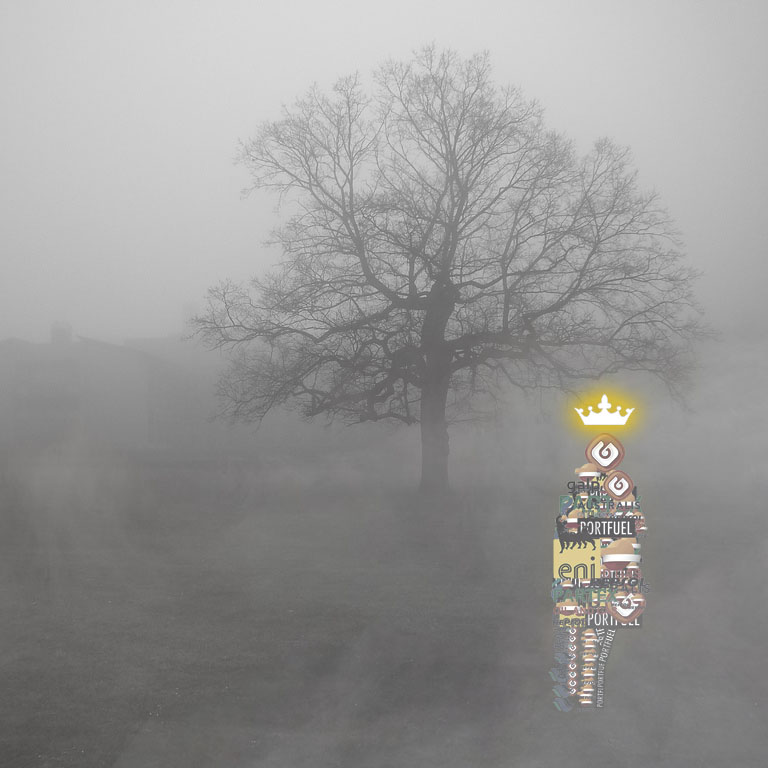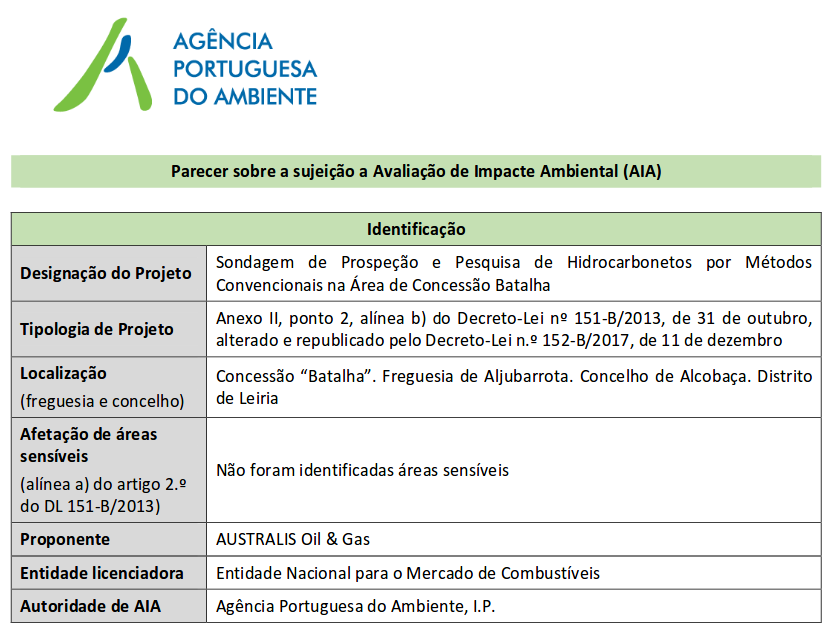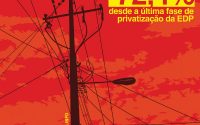Portugal // Even if some are already claiming victory, the Aljubarrota prospection well was not suspended~ 5 min

Victory was celebrated, but the well hasn’t been rejected. What is being discussed is the suspension or not of the decision process to subject the well to an Environmental Impact Assessment. It’s a pre-evaluation stage prior to the AIA procedure and the emission or denial of the license required by a “case-by-case analysis”, which applies to the Aljubarrota well. Because there is a law that predicts a procedure. Whatever happens, blame the law and the lawmaker who wrote it.

Not that analyzing the legal process and the law is particularly interesting. The truth is that the environmental impact evaluation process doesn’t care all that much about the environment and climate change; if such concern existed, the process itself wouldn’t, since the best option would be to prohibit the exploitation of hydrocarbons and ores and void the need for all these discussions around contracts, concessions and wells.
The company Australis, under the “Batalha” concession agreement – which includes the right of access and exercise of exploration/exploitation activities, research, development and production of hydrocarbons – requested the Prospecting Survey and Search for Hydrocarbons by Conventional Methods in the Batalha Concession Area license. This concession contract still shows up in the National Entity for the Fuel Market (ENMC) – the licensing entity deciding whether to subject Australis’ request to an AIA in a case such as this, involving non-sensitive areas (article 3º/nº5 RJAIA) – as undergoing; which means that, as long as it is in force, Australis can request the license requirements it wishes. These requirements are entered into an online platform through their private account, unaccessible to common mortals.
The Portuguese Environment Agency (APA) – the authority responsible for managing the AIA – has issued a prior opinion at the request of the licensing authority. It was made public after the 20 days during which the APA was supposed to give a reply (article 3º/nº4 RJAIA). In this opinion, they decided “not to decide” due to lack of information about the exact location and significant environmental impact of the proposed operations.

This thing of “not deciding” isn’t exactly mentioned in the the Legal Regime of Environmental Impact Assessment (RJAIA). The APA’s inconclusive opinion did make some recommendations to Australis, regarding the way they should complete the document that was submitted to the online application. In a legal scenario that really took the environment into account, this would be more than enough reason to – and since the environmental impact assessment scheme exists – proceed with the environmental impact assessment procedure, to ascertain the true environmental impacts; it is exactly for this that the RJAIA was supposedly planned.
This out of time non-decision pronouncement of the APA can be interpreted in various ways, since the interpretation of the law depends on Doctrine; meaning the opinion of important people inside Law’s closed off world. And because Doctrine often diverges, various interpretations can arise from the same law. In this case, one could read/interpret that the APA’s non-decision pronouncement is not valid because it is out of time and, as such, the well can be done without an environmental impact assessment (article 3º/nº4 RJAIA).

Or one could read/interpret/understand that since the APA – and the ENMC as the licensing entity – claim that information is missing according to what is required by Annex IV of RJAIA, the procedure should be suspended until the missing information is added.
It seems that the second interpretation was the chosen one. Therefore, all deadlines as well as the procedure are suspended until further information is available. The APA states in its opinion that the ENMC “awaits the delivery of the detailed Drilling and Sludge Program as well as the Serious Risks Report, in accordance with article 35.º of Law-Decree No. 13/2016, of March 9th, along with the concessionaire and its subcontractors’ Hygiene, Safety and Environmental Plan”. When Australis delivers the missing documentation and information to ENMC, the analysis procedure will be restarted on a case-by-case basis.

The important result of the public consultation should also be mentioned: “In the context of the public consultation, the majority of the opinions were in favor of an Environmental Impact Assessment procedure for the project under analysis, either by application of the precautionary principle, or by the location, size and characteristics of the project”. Once again, if the legal figure of the public consultation had any kind of importance and was binding, it would be sufficient in itself to start the AIA procedure.
The Minister for the Environment, as well as the parties that have the power to directly question the public entities involved in the process, may state whatever they wish; but this is not a victory. It is only a suspension – a delay. It should not be thought of as a refusal to grant the license. That remains to be seen.




